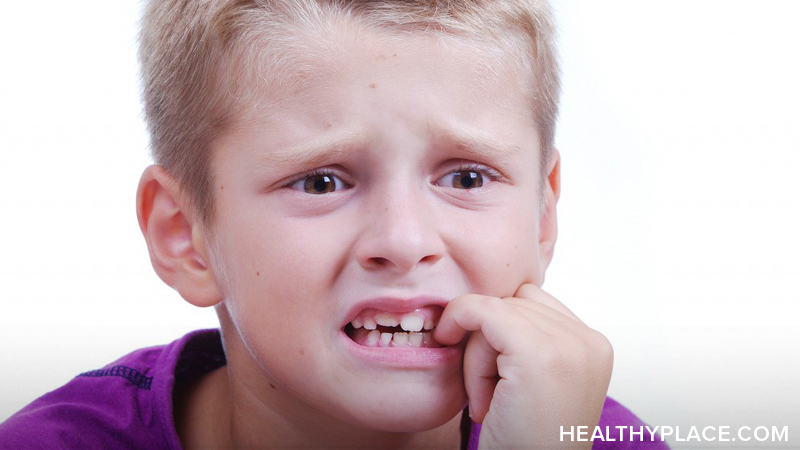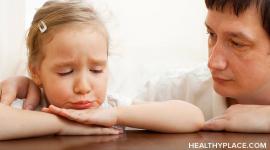Separation Anxiety in Children: How to Help Your Child

Separation anxiety is common and only seen in children. Separation anxiety can be seen in toddlers, children and teens. This anxiety disorder is often a precursor to school refusal. Separation anxiety is seen, on average, in 2%-4% of children. About one-third of children with separation anxiety have co-occurring depression. An additional quarter have another behavioral disorder like attention deficit hyperactivity disorder (ADHD).
The causes of separation anxiety disorder are not fully understood although one is thought to be early separation from the primary caregiver. Separation anxiety may also be due to lowered levels of a stress-related chemical, cortisol,in the brain.1
Signs of Separation Anxiety in Children
Separation anxiety in children generally manifests as an unrealistic fear or worry about harm that may come to the primary caregivers. This can result in a refusal to spend significant amounts of time, such as nights or school days (read School Anxiety in Children), away from caregivers or throwing tantrums before separation.
Other signs of separation anxiety disorder include:
- Reluctance to fall asleep without being near a caregiver
- Nightmares
- Homesickness
- Physical symptoms like stomachaches, dizziness and muscle aches
Treatment for Separation Anxiety in Children
The most important thing to do when separation anxiety starts to negatively impact the life of the child is to get a professional evaluation. Only a professional can diagnose separation anxiety disorder and determine the causes behind the disorder. These specific causes will determine the best treatment.
Treatments for separation anxiety disorder in children include:
- Relaxation exercises – led by professionals and practiced at home. Relaxation exercises are useful before other types of therapy and can make them more effective.
- Cognitive behavioral therapy (CBT)– attempts to reactivate thoughts and actions in the child that are more confident. Rewards for returning to a normal routine, such as going to school, can help change behaviors. CBT can be delivered in-person or even by computer using a scientifically validated program: The "Coping Cat."
- Psychological (psychodynamic) therapy – works to outline the underlying reasons both conscious and unconscious behind the separation anxiety. Frequent treatment, two-to-three times a week, has a high success rate. Family participation in therapy can increase effectiveness.
- Social therapy – attempts to use the child's history to determine if non-separation anxiety issues may be causing behavior like school refusal. Examples include learning disabilities and bullying.
- Medication – as many therapies have a high success rate, medication is not the preferred frontline treatment in most cases and should always be used in conjunction with other therapies. Fluoxetine (Prozac), an antidepressant, is the only FDA-approved medication for use in those under 18 for separation anxiety treatment.
Whenever medication, particularly an antidepressant, is prescribed to children, it's important to remember that some medications carry the risk of increased self-harm and suicidal thoughts and behaviors. Close monitoring is important in medication treatment of separation anxiety in children.
Tips on How to Deal with Separation Anxiety in Children
It's important to try to keep the child's routine as much as possible. This includes the child going to school. If a child's separation anxiety is so severe they refuse to go to school or elsewhere, slowly introducing the child to the new environment can help them see there is nothing to fear and can reinforce the positive aspects of these activities. Missing school or other events can reinforce the separation anxiety, rather than help it.
Other ways to deal with separation anxiety in children include:2
- Talk with your child openly about their fears and worries; remain calm and non-judgmental
- Work with teachers, guidance counselors and others that will be caring for the child
- Take part in the child's therapy and reinforce therapeutic principles at home
- Encourage hobbies and interests to help build self-confidence
- Learn about your child's anxiety disorder
- Help build a child's support system including family, friends and others so the child feels safe and supported by many people
Using these positive coping and strength-building techniques has been clinically shown to reduce anxiety in children.
APA Reference
Tracy, N.
(2021, December 21). Separation Anxiety in Children: How to Help Your Child, HealthyPlace. Retrieved
on 2025, December 6 from https://www.healthyplace.com/anxiety-panic/anxiety-and-children/separation-anxiety-in-children-how-to-help-your-child



